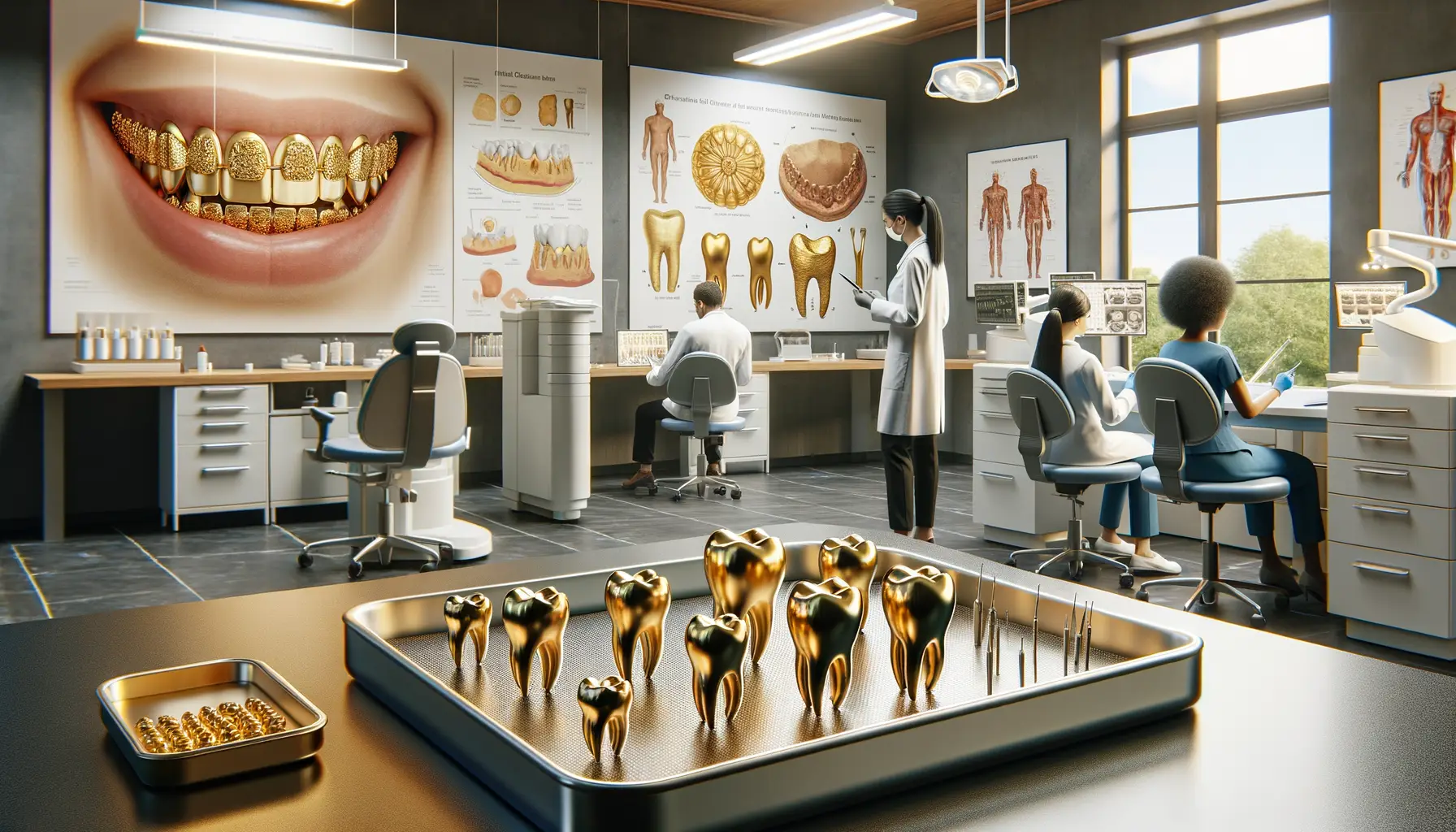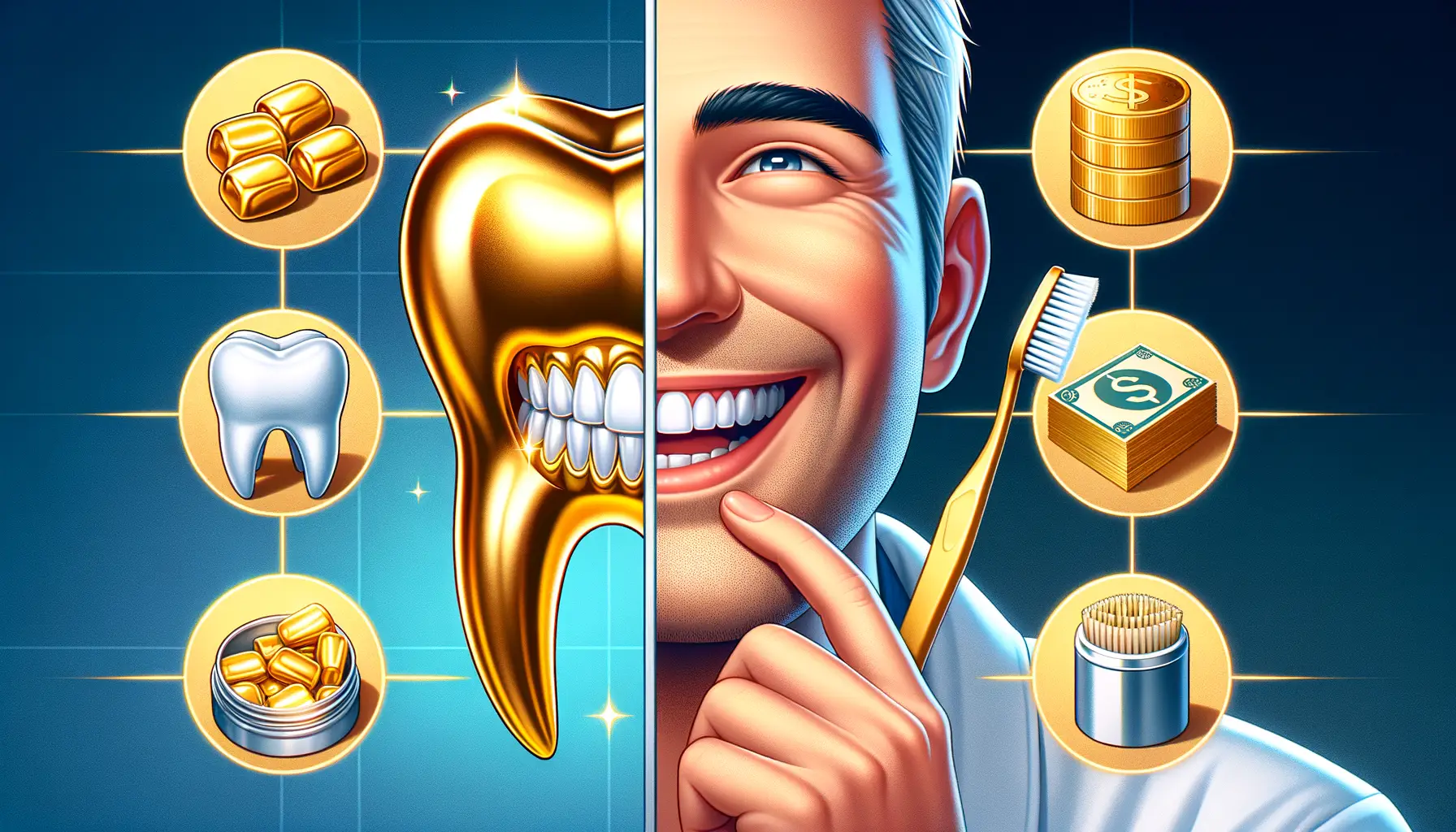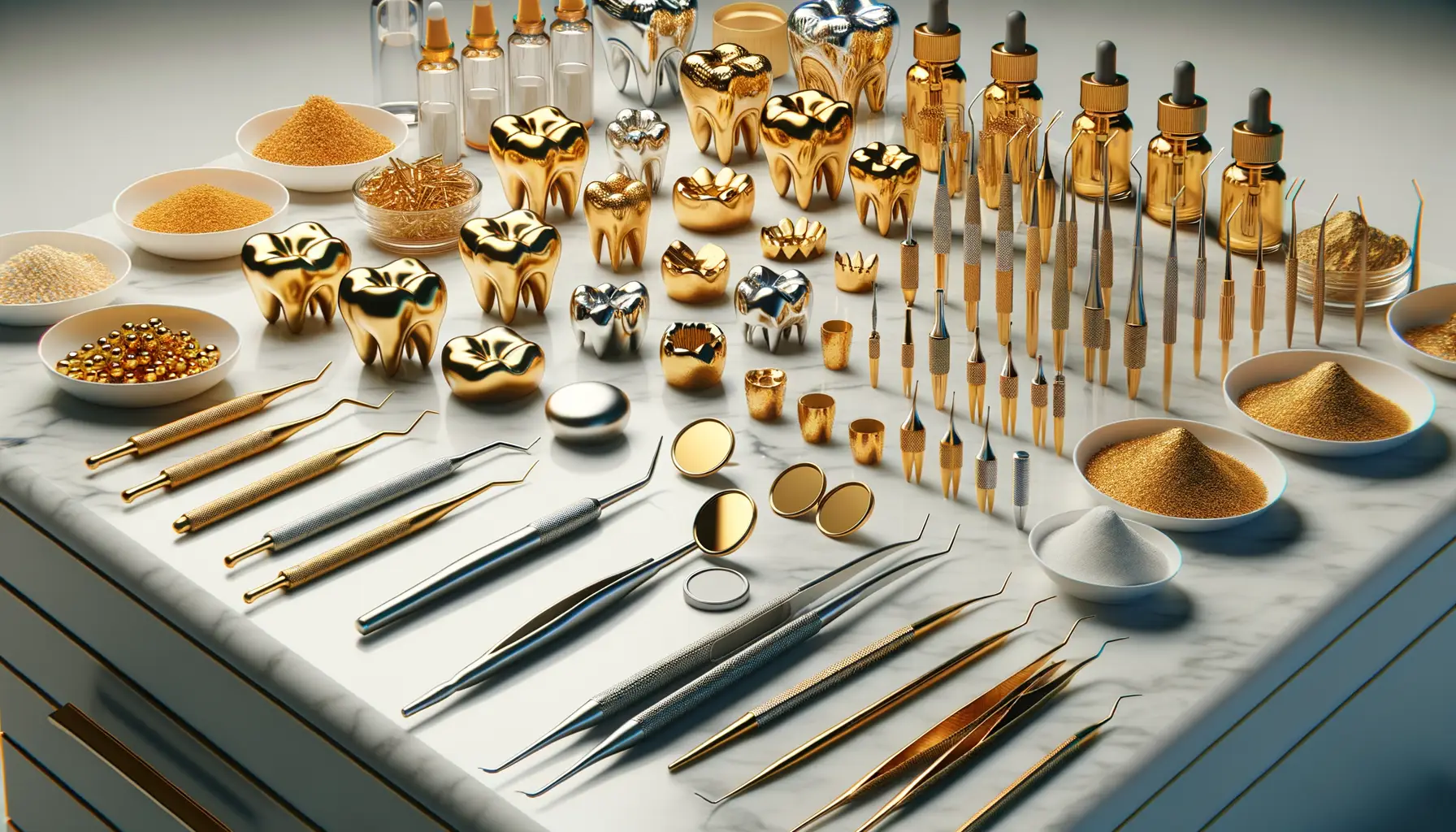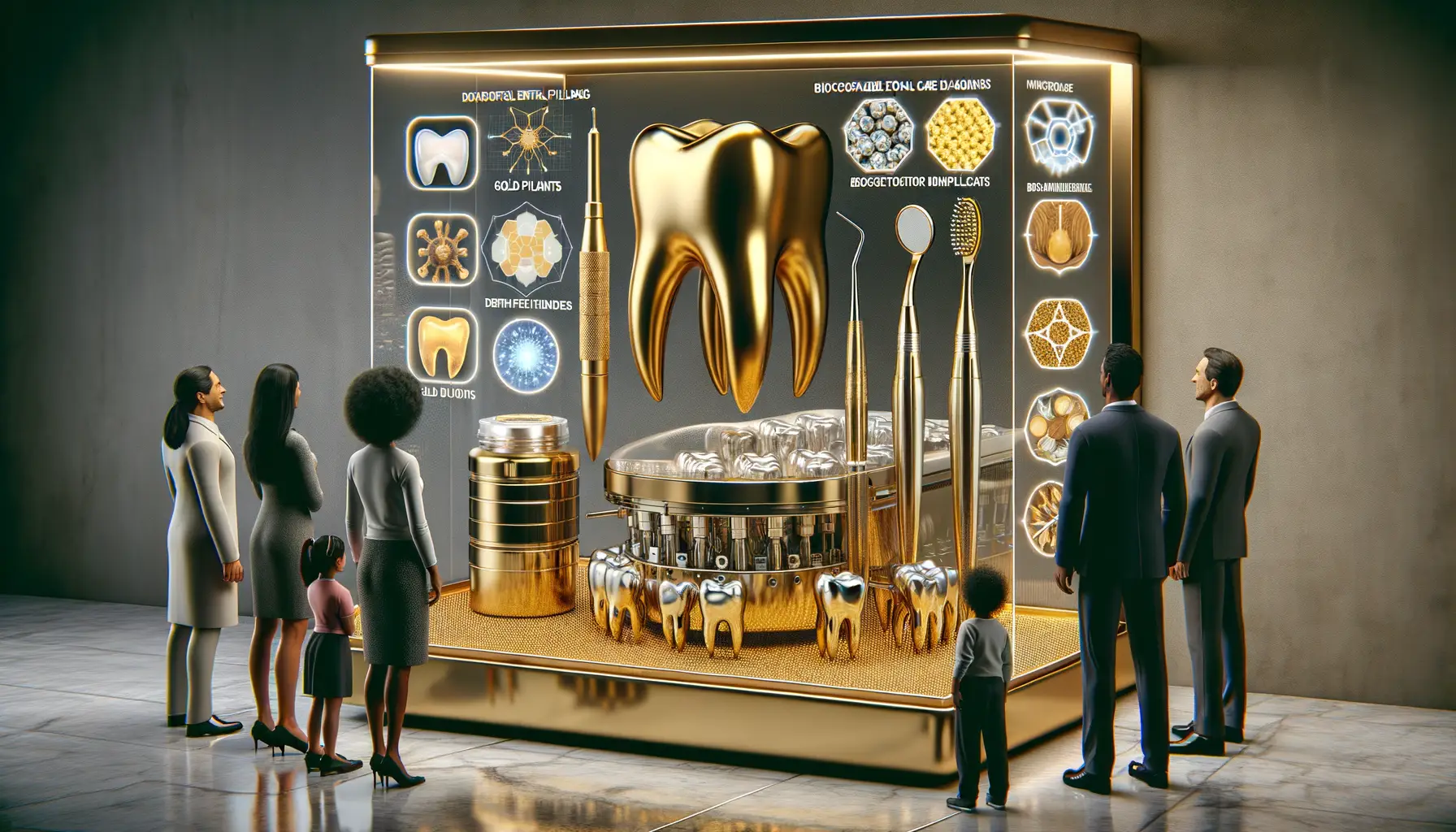Historical Significance of Gold in Dentistry
The Golden Secret Behind Ancient Smiles
Gold’s reputation as a symbol of wealth and durability stretches far beyond currency or jewelry—it has long illuminated the world of dentistry! Imagine stepping into ancient Egypt, where pharaohs didn’t just rule kingdoms; they ruled innovation. Gold was used to craft dental bridges, reinforcing their belief in its indestructible nature. For them, a glimmering smile wasn’t just cosmetic—it was eternal, just like their pyramids.
Fast forward to the Etruscan civilization of the 7th century BCE, where gold wires tied loose teeth together like a precious thread holding life itself intact. Gold wasn’t merely a material; it was a lifeline for maintaining dignity in an era without modern medicine.
- 19th-century dentures: Pioneer dentists melded gold with porcelain for stunningly resilient false teeth.
- Medieval Europe: Gold fillings were considered both practical and symbolic of affluence.
Through the ages, gold has stood as a testament to creativity and resourcefulness in dentistry. Isn’t it fascinating how something so simple—a shimmering metal—has been trusted as both a tool and status symbol for centuries?
Modern Applications of Gold in Dental Practices

Why Gold Still Shines in the Modern Dental World
If you think gold is just for jewelry, think again—this precious metal has carved out a golden niche in today’s dental practices! Far from being outdated, gold is now the secret weapon for creating durable, elegant, and highly biocompatible dental restorations.
Picture this: a patient walks into a dental office with a cracked molar. Instead of opting for materials that might wear out sooner or irritate sensitive tissues, many dentists still reach for gold because of its unmatched reliability. Whether it’s a crown, an inlay, or even a filling, gold delivers a performance that rivals modern ceramic and composite options—but with its own unique flair.
Gold Is More Than Old-School Glamour
Why are dentists sticking with gold when there are countless new materials out there? The reasons are as compelling as a well-crafted smile:
- Unbeatable longevity: Gold restorations can last decades, often outliving other options by leaps and bounds.
- Perfect fit: Its malleability allows for precise shaping, giving patients a seamless, irritation-free experience.
- Gentle on opposing teeth: Unlike harder materials, gold doesn’t grind down natural enamel.
From high-tech CAD/CAM systems crafting custom designs to cutting-edge alloys combining gold with platinum or palladium, this timeless material is still proving its worth where it matters most—right inside your smile.
Advantages and Disadvantages of Using Gold in Dentistry

Why Gold Shines in Your Smile
Gold has a long-standing reputation as a superstar in dental materials. Why? Its unique properties make it not just durable, but downright luxurious—almost like wearing jewelry in your mouth! One of its standout advantages is unparalleled durability. Gold fillings, crowns, or bridges can last decades, even outliving their ceramic or composite cousins. Plus, gold is gentle on surrounding teeth, meaning it won’t wear down your natural enamel over time.
Another hidden gem? Gold’s remarkable ability to resist corrosion. Unlike other metals that might tarnish or degrade, gold remains unwaveringly beautiful and functional. And for those prone to sensitivity? Gold doesn’t expand or contract as much as other materials with temperature changes, offering a stable, comfortable fit.
But, let’s not sugarcoat it—you’re paying for the premium.
The Other Side of the Coin
Like all precious things, gold isn’t without drawbacks.
- Cost: Gold dental work often comes with a hefty price tag, making it inaccessible for some budgets.
- Aesthetics: While gold might scream elegance for some, others find its metallic hue distracting, especially for front-facing teeth.
- Weight: Those unaccustomed to gold restorations may notice its density at first.
So, while gold remains a stellar choice for many, it’s not everyone’s cup of tea—or should we say, treasure chest!
Innovations and Trends in Gold-Based Dental Materials

Revolutionizing Dental Care with Gold Alloys
Gold in dentistry is no longer just about tradition; it’s stepping boldly into the future, driven by cutting-edge technology and modern needs. Today, gold-based dental materials are being reimagined with innovations like nanotechnology, creating alloys that are lighter, stronger, and more wear-resistant than ever. Imagine a gold crown that’s not only beautiful but also engineered at a molecular level to adapt better to your bite—sounds futuristic, right? Well, it’s already happening.
What about durability? Researchers are exploring composite gold materials that mix gold with biocompatible ceramics or polymers. These hybrids bring together the best of both worlds: they retain gold’s flexibility while boosting toughness and precision.
- Anti-bacterial coatings: New developments are pairing gold with antimicrobial solutions to fight gum infections proactively.
- 3D printing: Gold powders designed for 3D printers are enabling ultra-precise custom implants with minimal waste.
Aesthetics Meet Innovation
Let’s talk design. Gold is getting a sleek makeover thanks to surface treatments and color enhancers. Modern techniques now allow for matte finishes or subtle hues, so you can rock a smile that’s both sophisticated and discreetly golden. The blend of science and art here feels like alchemy—where function meets a touch of magic.
Future Perspectives on Gold Usage in Dentistry

Expanding Horizons: Gold’s Untapped Potential in Dentistry
The future of gold in dentistry sparkles with possibility, like a treasure chest waiting to be discovered. Its time-tested reputation meets groundbreaking innovations, creating opportunities that feel almost futuristic. Imagine dental materials engineered not just to mimic teeth but to outperform them, and guess what? Gold could very well lead the charge.
Researchers are exploring ways for gold alloys to become more lightweight, cost-efficient, and sustainable. This isn’t just about crowns or bridges anymore; we’re talking nanotechnology. Yes, those glittering particles could revolutionize treatments! Picture gold nanoparticles used to detect oral diseases at microscopic levels or even smart fillings designed to fight bacteria on their own.
- Biocompatibility: The search for hypoallergenic solutions keeps gold in the spotlight as a key player in advanced prosthetics.
- Aesthetic evolution: Techniques are emerging to fuse gold’s durability with hyper-realistic finishes, blending strength with beauty like never before.
What’s most exciting is the potential for personalized applications tailored to each individual’s health needs. Gold still wears its crown proudly, but its reign could soon lead us down roads we’ve yet to imagine.
